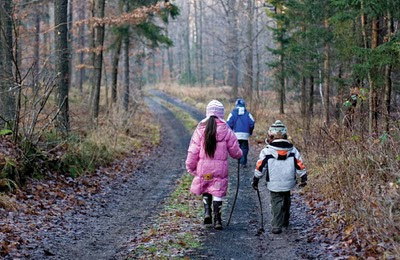Dr. Montessori understood that learning is always more meaningful when a personal connection is made between a new concept and life experience. When a student is able to make real life connections, his interest and willingness to learn more and accept new challenges increases. His learning opportunity is further aided when he sees materials and concepts in new and diverse situations.
In the Montessori environment, the concept of “going-out” is related to the acquisition of culture. Montessori was a firm believer in the need for elementary-aged students to benefit from the firsthand experience of outside activities involving society, culture, and the natural world. Dr. Montessori stated that “The senses, being explorers of the world, open the way to knowledge.” By providing opportunities that engage the student in a holistic manner, we are enabling an immersion of lasting sensory experiences. Environmental living programs are an amazing combination of going out, Cosmic Education, Montessori and stewardship values.
Montessori Environmental Living Programs Explained: Stewardship and Cosmic Education
Environmental Living ProgramsEnvironmental Living Programs (ELP) build knowledge and appreciation. Through hands-on learning experiences, Montessori students explore history and culture as active participants. Often, students spend a day and a night (or more) in a living history situation, taking on the persona and costume of a figure from days gone by. ELP’s are offered at many cultural, historic, prehistoric and natural sites. Through role-playing and problem solving, children discover the interaction and interdependence of people and their environment.
I first learned about ELP’s when I was teaching in California several years ago. The fourth-grade class was all abuzz about their upcoming trip to Sutter’s Fort. They spent weeks preparing and studying about the California Gold Rush. They were busy creating the costumes they would wear as pioneer Californians. They spoke excitedly about riding on real horse-drawn wagons to Sutter’s Fort as they traced the footsteps of those who had gone before. Once at the location, students and teachers spent a full day and night exploring the time of the Gold Rush, including clothing, agriculture, cooking and baking bread, basketry, candle making, carpentry, laundry, corn husk dolls and rope making, schooling spinning and weaving, trapping, wagon trains, vaqueros, and how trade stores worked. (For more information, you can visit California State Parks - Environmental Living Program.)
Environmental Living Programs can be in the form of living history programs, or along the lines of environmental science and stewardship. In the latter, your Montessori students can learn about the natural resources around them and the best way humans can protect the environment.
To find Environmental Living Programs near you, look for historical or environmental sites which seek to bring the learning environment alive for children. Participating in these will provide experiences that your Montessori students will remember throughout their lives.
As much as possible, NAMC’s web blog reflects the Montessori curriculum as provided in its teacher training programs. We realize and respect that Montessori schools are unique and may vary their schedules and offerings in accordance with the needs of their individual communities. We hope that our readers will find our articles useful and inspiring as a contribution to the global Montessori community.
© North American Montessori Center - originally posted in its entirety at Montessori Teacher Training on Monday, March 1, 2010.
© North American Montessori Center - originally posted in its entirety at Montessori Teacher Training on Monday, March 1, 2010.



0 comments:
Post a Comment
Have questions or comments? Let us know what you thought about this article!
We appreciate feedback and love to discuss with our readers further.